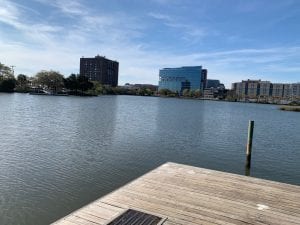Happy Earth Day! Today I watched “The Devil we Know”. The documentary covers the toxic chemical cover up done by DuPont and 3M. In 1945 the DuPont plant in West Virginia began the production of the C-8 synthetic chemical that is extremely harmful. C-8 has been found in the blood of 99% of the world. It causes birth defects, cancer, harms animals, etc. The land was purchased from a WV Farmer where DuPont claimed they would dispose of non-toxic chemicals. After the plant started the farmer who sold the land noticed that fish were dying in the river and his cattle where dying from drinking from the river.
The documentary covers the story of how a household brand like Teflon has impacted so many people and their lives. One man in the documentary was born with birth defects due to the chemical exposure his mother had while working for Teflon making the non-stick pans. The synthetic chemicals used in Teflon products created many birth defects. One man was born blind on one eye and only had on nostril. They did not think he would make it through his first night. He ended up making it through and went on to have 30 surgeries before he turned 5. This had a great impact on his life and it was caused due to the C-8 chemicals produced in WV by DuPont. The toxic chemicals are now apart of every person on this planet because we consume them through food or water.
The chemicals from Teflon products cause cancer in animals and people. This pollution causes 9 million premature deaths annually. This number is compelling to me. Teflon, DuPont, and 3M have all tried covered up this information. They offered settlements to those effected, but the class decided not settle and filed a class-action law suit against DuPont. There is no amount of money that fix the lives that are taken by C-8 and other synthetic chemicals created by these companies. To this day DuPont and 3M still try to cover up what happened and continues to happen. The exposures to the contaminated water, air, and soil kill more people than smoking, hunger, natural disasters, war, AIDS, or malaria (thedevilweknow.com). This is shocking and scary. Peoples lives are affected daily by this.
It’s important to remember that the Teflon products are still used in houses today. There is no way to escape the chemicals that are used in these products. It’s in our carpets, floss, water resistant clothes, and non-stick cookware. The producers of this film wanted to uncover what they have tried so hard to cover up. This documentary was eye-opening and educational. It made me sad watching this. This has effected they entire planet and it can from Americas backwards economics. This could have been prevented and it wasn’t. Now our generation must find ways to live with this and try to fix it. The documentary can be viewed on Netflix, I also recommend checking out thedevilweknow.com for more facts and information on the issue.


